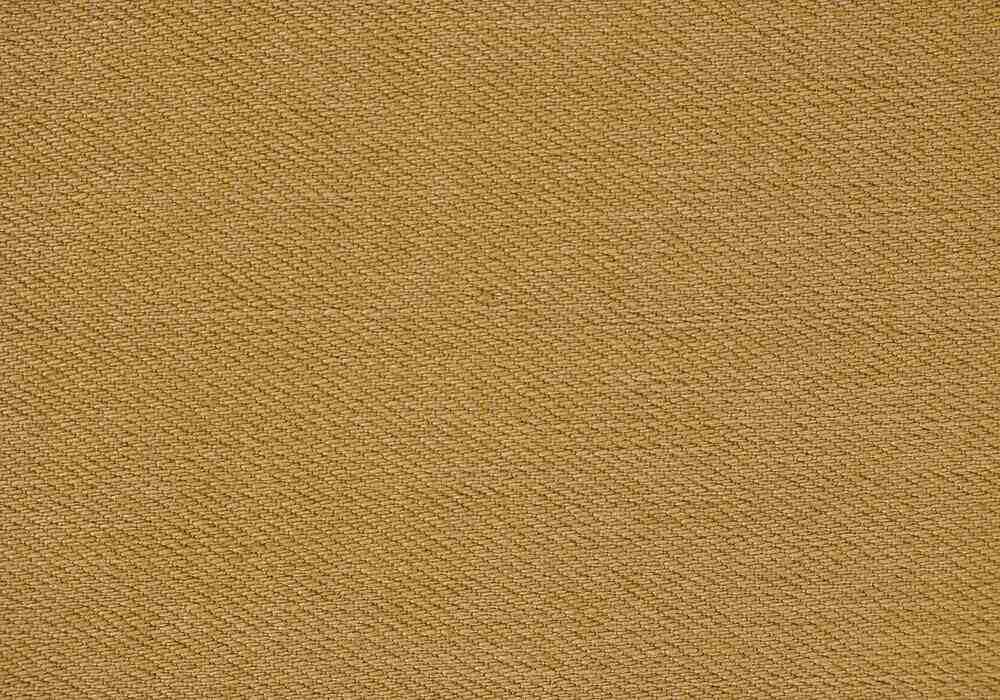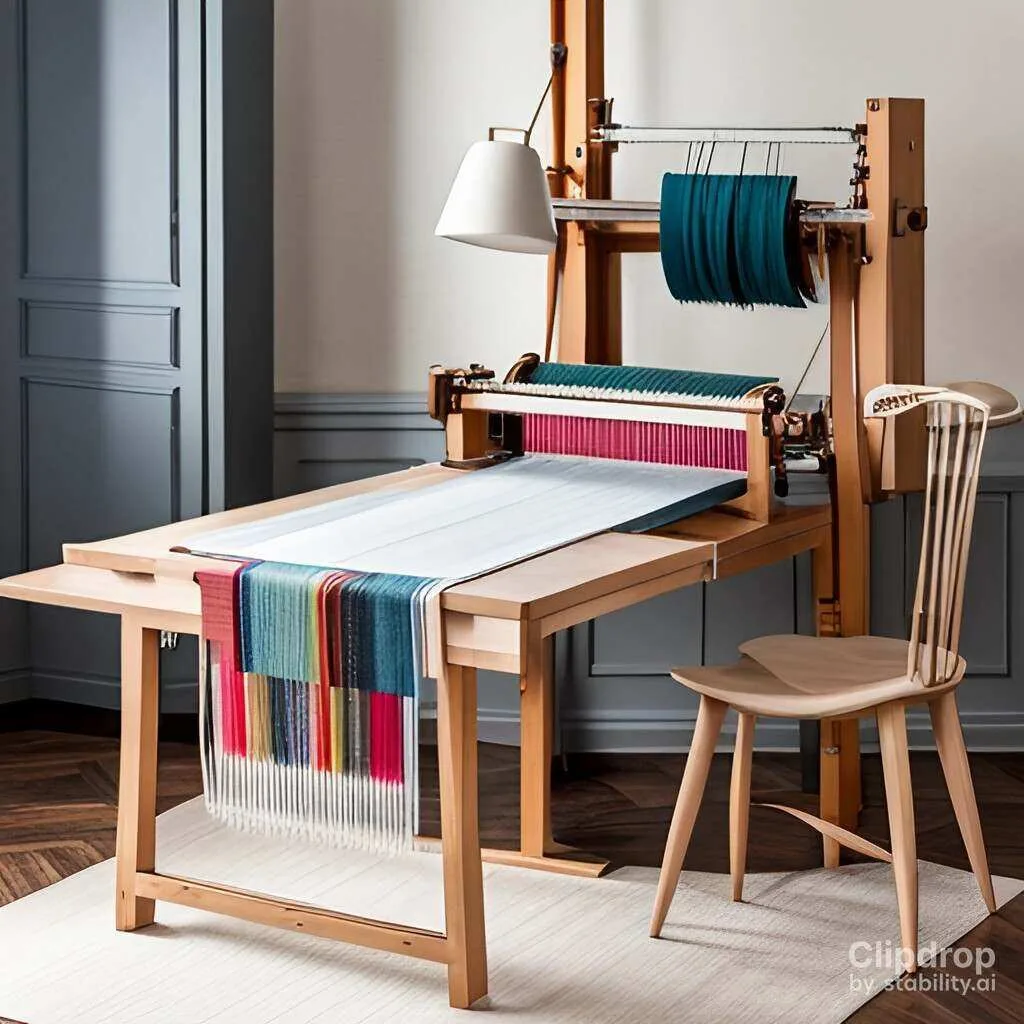Table of Contents
Introduction
“Cotton twill is a classic fabric that will never go out of style. It’s timeless and enduring.” Said Tommy Hilfiger, an American fashion designer. This inspires me to write this blog on what is twill cotton weave and the science behind this robust fabric.
A couple of Interesting statistics on twill cotton are as….
According to a report by Grand View Research, the global cotton twill market size was valued at USD 8.8 billion in 2020 and is expected to grow at a compound annual growth rate (CAGR) of 4.1% from 2021 to 2028.
Cotton twill is one of the most commonly used fabrics in the fashion industry, with a survey by Statista finding that 66% of fashion industry professionals reported using twill fabrics in their collections.
Twill cotton weave is a textile marvel that has withstood the test of time. From workwear to high fashion, this durable and long-lasting fabric has been a staple in our wardrobes for centuries.
A small bit of introduction on myself would be that I am servicing this textile and apparel field since 1997 and have been learning, implementing, and sharing my knowledge with a like-minded community. A detailed of me can be checked out on my About Us page.
As this blog covers the topic of twill fabric science and the durability of the fabric. I have another blog on the usage, market qualities, and comparison with other fabrics. You can check my blog “Potential & magic of understanding what is cotton twill fabric used for, It’s types and available market qualities.“
But have you ever wondered what makes twill cotton weave so special? What gives it that unique diagonal pattern and the ability to withstand heavy wear and tear? In this blog post, we delve into the science behind twill cotton weave and explore the secrets behind its durability and strength.
Whether you’re a fashion enthusiast, a textile connoisseur, or simply curious about the fabrics that make up our everyday lives, this post is for you. Get ready to uncover the hidden gems of twill cotton weave and discover why it’s one of the most beloved fabrics in the world.
What is twill cotton meaning? Definition and characteristics
Twill Cotton is a natural fabric that is made from natural fibers. I have elaborated on a list of natural fabrics in my blog “A List of Best Natural Fabrics Names & Qualities in Market” where you may have detailed insights.
A common fabric type used in apparel, upholstery, and other textile products is twill cotton. The characteristic diagonal weaving pattern of twill cloth gives it a distinct touch and appearance. In this text, we shall define twill cotton and discuss some of its qualities.
Definition of Twill Cotton
Twill cotton is a type of cotton fabric that is woven in a specific pattern known as a twill weave. This weaving technique creates a fabric with a distinct diagonal pattern that is visible on the face side of the cloth. The diagonal lines in twill cotton are created by the way the threads are interlaced, where one thread passes over two or more threads, and then under one or more threads in a repeating pattern. The result is a fabric that is strong, durable, and has a characteristic texture.
Characteristics of Twill Cotton
Twill cotton is known for its unique characteristics, which include:

Diagonal weave pattern
The most distinctive characteristic of twill cotton is its diagonal weave pattern. This pattern gives the fabric a unique texture and appearance.
Durability
Cotton twill is a sturdy material that withstands wear and tear. because of the fabric’s distinctive weave pattern, which imparts it this character. As a result of the comprehensive fashion the weave binds the yarns, it can resist numerous washings and intensive use without losing quality.
Softness
Even though it is strong, twill cotton is soft and comfortable to wear. This is primarily because of the fiber content involved in weaving. The primary factor for it being soft is that it features cotton, which is a hollow fiber composed of plant-based materials. It is a preferred fabric for jackets, khakis, and other apparel items.
Versatility
Twill cotton is a versatile fabric that can be used for a wide range of textile products, including clothing, upholstery, and accessories.
Colorfastness
The industry uses a variety of dyes and procedures for dying fabrics in accordance with market demands. Cotton twill is flexible enough to be dyed using practically any method. This indicates that twill cotton has high colorfastness, i.e., the colors won’t bleed or run when washed or exposed to sunlight.
Breathability
Twill cotton is a breathable fabric. This is mainly due to the fiber content that it contains. Since twill cotton is made of cotton which is a natural hollow fiber that helps the fabric to be breathable and airy. Making it ideal for warm-weather clothing.

What makes twill cotton weave so durable and long-lasting?
Fabric with a twill cotton weave is well known for its strength and durable quality. Because of its own durability, this fabric is frequently used for a variety of textile products, such as apparel, furniture, and accessories. In this study, we’ll look into what makes twill cotton weave so strong and long-lasting.
Diagonal Weave Pattern:
The diagonal weave pattern of twill cotton is the most significant factor in its durability. This weave pattern is formed by passing the weft thread over and under the warp threads in a specific pattern, which creates a diagonal line in the fabric. The specific pattern would be a weft yarn that would cross over two warp yarns. This weave pattern makes twill cotton weaves stronger and more resistant to wear and tear than other types of fabric weaves.
Thread Count:
Another factor that contributes to the durability of twill cotton is the thread count. Thread count refers to the number of threads woven into one square inch of fabric. A higher thread count means that there are more threads per inch, which makes the fabric denser and more durable. Twill cotton with a higher thread count is less likely to tear or wear out quickly.
Fiber Quality:
The quality of the fibers used to make twill cotton also plays a significant role in its durability. High-quality cotton fibers are strong, long-lasting, and resistant to breakage. Twill cotton made from high-quality cotton fibers is less likely to pill, fade, or lose its shape over time.
Finishing Techniques:
The finishing techniques used on twill cotton weave can also contribute to its durability. Some common finishing techniques include mercerization, which strengthens the fibers and gives them a lustrous sheen, and singeing, which removes any loose fibers from the surface of the fabric, making it smoother and more durable.
The science behind twill cotton weave: How it works and why it’s so effective
A unique style of fabric known as twill cotton weave is woven in a particular pattern that leaves the fabric’s surface with a diagonal pattern. There are practical advantages to this weave design in addition to its aesthetic appeal. We will examine the science underlying twill cotton weave, how it functions, and why it is so successful.
The Basic Science:
Twill cotton weave is created by weaving the weft thread over and under the warp threads in a specific pattern. This pattern creates a diagonal line on the surface of the fabric, which is known as the twill line. The twill line is created by the weft thread passing over two or more warp threads, then under one or more warp threads, creating a diagonal pattern that repeats across the fabric.
How it Works:
The diagonal pattern created by the twill weave has functional benefits that make twill cotton weave so effective. The diagonal pattern makes the fabric stronger and more durable than other types of weaves. This is because the diagonal lines create a crisscross pattern that distributes the stress of pulling and tugging across a wider area of the fabric, preventing any one thread from bearing the entire load. This makes twill cotton weaves less likely to tear or wear out than other types of weaves.
Another benefit of the diagonal pattern is that it creates a natural resistance to wrinkling. The diagonal lines in the twill weave create a series of peaks and valleys, which allow the fabric to stretch and move without losing its shape. This makes twill cotton weave ideal for clothing and other textile products that require durability, flexibility, and resistance to wrinkling.
Why It’s So Effective:
Twill cotton weave is effective because of its unique combination of strength, durability, and flexibility. The diagonal pattern created by the twill weave distributes stress across a wider area of the fabric, making it stronger and more resistant to tearing and wear than other types of weaves. Additionally, the flexibility of the fabric makes it ideal for clothing and other textile products that require movement and stretching without losing their shape.
Moreover, the natural resistance to wrinkling makes twill cotton weave easy to care for and maintain, requiring less ironing and fussing than other fabrics. This makes it ideal for busy people who want to look sharp without spending a lot of time on their clothing.

The Role of thread count and yarn quality in twill cotton weave
Fabric with a twill cotton weave is renowned for its robustness, comfort, and adaptability. The thread count and yarn quality are important elements that affect the twill cotton weave fabric’s quality. The function of thread count and yarn quality in twill cotton weave will be addressed in this column.
Thread Count:
Thread count is the number of threads woven into one square inch of fabric. In general, the higher the thread count, the softer and more luxurious the fabric feels.
At this point, I would like to elaborate that in a square inch to accommodate maximum threads one can implement finer grades yarns. And the finer grades of yarns are only soft and supple. And gives a great feel to the user. Similarly using coarse grades yarn which is thick in nature and robust in feel and usage, has a lower thread count compared to a finer count of yarn.
However, thread count alone does not determine the quality of the fabric. The quality of the yarn used also plays a significant role.
Yarn Quality:
The quality of the yarn used in twill cotton weave affects the strength, durability, and softness of the fabric. High-quality cotton yarns have longer fibers and produce stronger, smoother, and more consistent threads. These threads are less likely to break or pill over time, resulting in a more durable and long-lasting fabric.
Cotton yarns can be further classified into different grades based on their quality. The highest quality cotton yarns are extra-long staple (ELS) cotton, also known as Pima or Supima cotton. These cotton fibers are longer, stronger, and produce finer threads with a higher sheen and smoother texture. Fabrics made from ELS cotton are known for their luxurious feel, durability, and resistance to pilling.
Twill cotton weave fabric made from lower-quality cotton yarns may feel rougher, have a shorter lifespan, and may not hold up as well over time. Additionally, lower-quality cotton yarns may be more prone to pilling, which can make the fabric appear worn and faded.
Advantages and disadvantages of using twill cotton weave
Popular twill cotton weave is prized for its sturdiness, adaptability, and recognizable diagonal pattern. It comes with advantages and drawbacks just like any other cloth. Let’s dive in and investigate the benefits and drawbacks of employing twill cotton weave.
Advantages of Twill Cotton Weave:
Durability:
Twill cotton weave is known for its durability and resistance to wear and tear. It can withstand frequent use and washing without losing its shape or color.
Versatility:
Twill cotton weave can be used for a variety of products, including clothing, home decor, and upholstery. Its diagonal pattern gives it a unique look that can be used for both casual and formal items.
Comfort:
Cotton is a soft and breathable fabric, and twill cotton weave is no exception. It is comfortable to wear and can help regulate body temperature.
Stain Resistance:
The cotton twill fabric has a tight weave that makes it resistant to stains. It is easy to clean and maintain, making it a popular choice for workwear and uniforms.
Appearance:
The diagonal pattern of twill cotton weave gives it a distinct and stylish appearance that can add texture and depth to any product.
Wrinkling:
Unlike other cotton weaves, this twill cotton fabric is wrinkle-resistant. This is easy to iron compared to other cotton weaves. As the cotton fabric is prone to wrinkling, this twill weave which has diagonal lines across the face of it helps the fabric to be intact and the reason behind being wrinkle resistant.
Disadvantages of Twill Cotton Weave:
Shrinkage:
Cotton twill fabric can shrink when exposed to washing, which can affect the fit of clothing and other products. It is important to follow care instructions carefully to prevent shrinkage.
But to overcome this issue the industry has invented a process of zero zero also named sanforized. This is done when the fabric is bleached, dyed or printed. This arrest the problem of shrinkage.
Cost:
Cotton twill fabric can be more expensive than other plain weave cotton fabric, As the weave has a particular pattern to be followed, which makes the production technical. Secondly, cotton is comparatively priced higher than polyester and viscose. Those who have a price bracket to match may have to consider these points.
Stretch:
The cotton twill fabric has no stretch, which may affect the fit of clothing items. It is important to consider the stretch of the fabric when designing clothing or other products.
How to care for twill cotton weave fabrics to maintain their durability and longevity
Twill cotton fabric is renowned for its toughness, coziness, and adaptability. Proper upkeep and care are required to preserve its quality and increase its lifespan. I’ve provided some advice and care guidelines for twill cotton weave fabrics in the paragraphs below.
Read Care Instructions:
Before washing or cleaning your twill cotton weave fabric, always check the care label for specific instructions. Different types of twill cotton fabrics may require different methods of care.
Avoid High Heat:
High heat can damage cotton fibers. It is best to wash twill cotton weave fabric in cold water and dry it on a low heat setting or air dry.
Use Mild Detergent:
Strong detergents can weaken cotton fibers and cause them to break down over time. Use a mild detergent specifically designed for delicate fabrics.
Pre-treat Stains: Treat stains promptly before washing by gently rubbing a small amount of detergent directly onto the stain. Avoid using bleach or harsh chemicals as they can damage the fabric.
Wash Separately:
To avoid color transfer and damage to the fabric, wash twill cotton weave fabric separately from other garments.
Iron on Low Heat:
If ironing is necessary, use a low heat setting and iron the fabric while it is still slightly damp to avoid damaging the fibers.
Store Properly:
Store twill cotton weave fabric in a cool, dry place away from direct sunlight. Avoid hanging the fabric for long periods as this can cause stretching and distortion.
Avoid Dry Cleaning:
Dry cleaning can be harsh on cotton fibers and may cause the fabric to lose its softness and durability over time. If dry cleaning is necessary, choose a cleaner that specializes in delicate fabrics and inform them of the fabric’s composition.
By following these tips, you can ensure that your twill cotton weave fabric stays in good condition and maintains its durability and longevity for years to come. With proper care and maintenance, you can enjoy the comfort and versatility of twill cotton weave fabric for a long time.
Conclusion
To sum up the above. I would say that cotton twill is a robust fabric and touches our life with softness and durability. A fabric that binds yarns in firmly gives a diagonal look. A fabric that is used in apparel, home décor, and industries. I have tried to compare other fabrics’ weaves and cotton twill has its own niche. This comparison can be seen in my blog Potential & Magic of Understanding what cotton twill Fabric used for, It’s types and available market qualities.
In the above blog, I have highlighted the available market qualities. If this blog interest you to create products that can give exceptional value to your esteemed customers I would be happy to help you and sure to satisfy your needs. Do get in touch with me through my contact page and I will make sure that I respond to your queries. Wishing you great success in your upcoming projects.
FAQ
What does twill fabric feel like?
Twill fabric has diagonal lines on the face of it. It is made of various fibers like Cotton, Wool, Polyester, Silk, rayon, Viscose, etc. The feel depends on the fiber that is used. In general, twill is a sturdy and durable fabric. Cotton twill fabrics are breathable soft and comfortable. Whereas polyester twill would be smooth and shiny. Likewise, twill made of Wool would be warm and made for suits and outerwear.
Is twill fabric good for winter?
Twill is a sturdy weave that is made from a variety of fibers, including cotton, wool, and synthetic fibers. It is a tightly woven fabric that is available in GSM values ranging from 80 to 400. Twill made of wool is an apt fabric for coats and suits. Cotton Twill is mainly used in pants giving warmth and comfort due to its thickness. Synthetic fibers have great insulating properties, hence twill fabric made of synthetic fibers is preferred for winter clothing.
Overall, twill fabric can be a good choice for winter clothing and accessories due to its thickness, durability, and ability to provide warmth. However, the specific warmth and insulation provided will depend on the specific fiber and weave density used, so it is important to choose the appropriate fabric for the desired level of warmth and protection.
What is broken twill?
Broken twill is a type of twill fabric that is woven in a way that creates a zigzag or irregular pattern instead of the traditional diagonal pattern. Unlike regular twill fabric, which has a continuous diagonal ribbing, broken twill can have varying patterns and textures depending on the specific weave used.
The term “broken” refers to the discontinuous pattern of the weave, which can create unique and interesting visual effects. The irregular pattern of broken twill can also help to reduce the tendency for twill fabrics to bias, or stretch and pull in one direction.
Broken twill can be woven in a variety of fiber types, including cotton, wool, and synthetic materials. It can be used to create a range of products, including clothing, upholstery, and accessories.
What is poly cotton twill?
Twill weave is made of various fibers like cotton. Wool, polyester, and other synthetic fibers. When a twill fabric is made by combining two fibers of cotton and polyester it is called poly cotton twill. The content of polyester and cotton is adjusted as per the market demands.
The reason behind blending two fibers qualities of cotton and polyester is they have the best of cotton and the best of polyester. The advantages of poly-cotton twill are durability, easy care, comfort, and Versatility.
Does cotton twill shrink?
Cotton by nature has the property to shrink. Hence cotton twill does shrink. But the industry has formulated a process where when the cotton twill from the looming stage to the finished product does not shrink.
So when the fabric from the looming stage goes for process the fabric is given maximum shrinkage and then given a process called Zero Zero. Which arrests this shrinking issue.
Is twill fabric comfortable?
Twill fabric is a tightly woven cloth. The uniform diagonal weave pattern has a smooth touch to the skin. Depending on the geographic location and requirements of the market Twill fabric is made of various fibers like Cotton, Wool, Silk, rayon, polyester, Viscose, etc. At times it has a combination of two or more fibers to give the best results. Due to its versatile and robust clothing application twill fabric is comfortable for the skin.
Does cotton twill wrinkle?
Twill weave is a tightly woven fabric and is resistant to wrinkle due to its weave structure. Since cotton requires regular maintenance and needs to be taken care of, cotton twill would wrinkle but not as much as plain weave cotton fabric. This cotton twill weave would be easy to maintain than regular cotton plain weave fabrics.
Does cotton twill stretch?
Cotton twill weave as a characteristic property does not stretch. But when cotton twill is blended with Lycra or Spandex it gives a stretch effect.
Is twill fabric good for summer?
Twill fabric is made of various fibers and in various thicknesses and GSM. If twill weave fabric is considered for Summer clothing, then the following aspects are to be looked for.
1. Cotton or Linen fiber to be used in Twill. As this is a breathable fabric and soft on the skin.
2. Twill weave GSM ranging from 80 GSM to 250 GSM would be an apt fabric for clothing for men, women, and kids.
3. Light and pastel colors and prints to be used for comfortable pleasant to the user.



Pingback: Dressed For Glory: Unraveling The Secrets Of Army Combat Uniform - Weaversfruit.com
Pingback: High School Uniform Design - Unveiling Power Beyond The Seam
Pingback: Explore What Is Cotton Twill Fabric Used For & Its Qualities
Pingback: A List Of Best Natural Fabrics Names & Qualities In Market